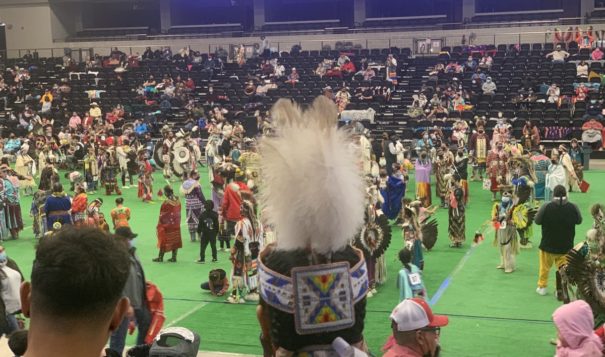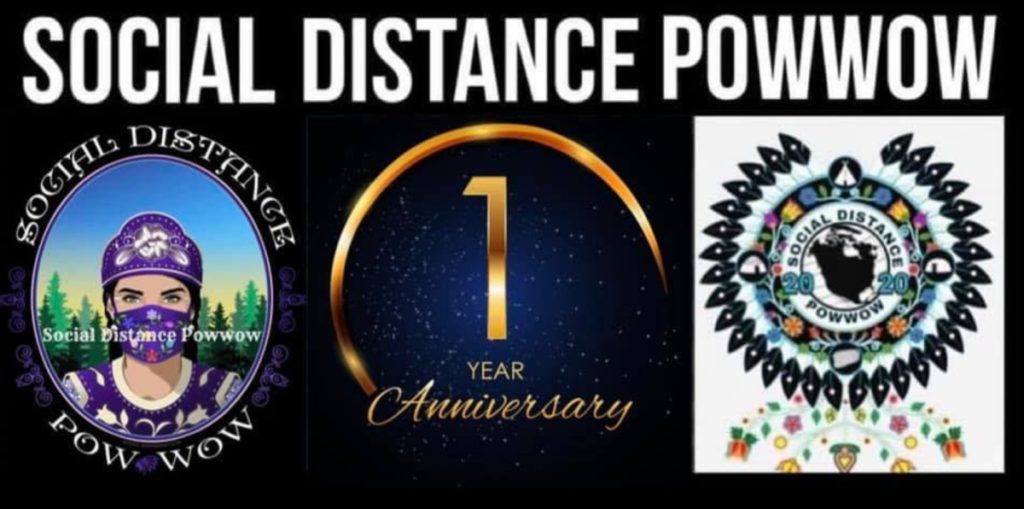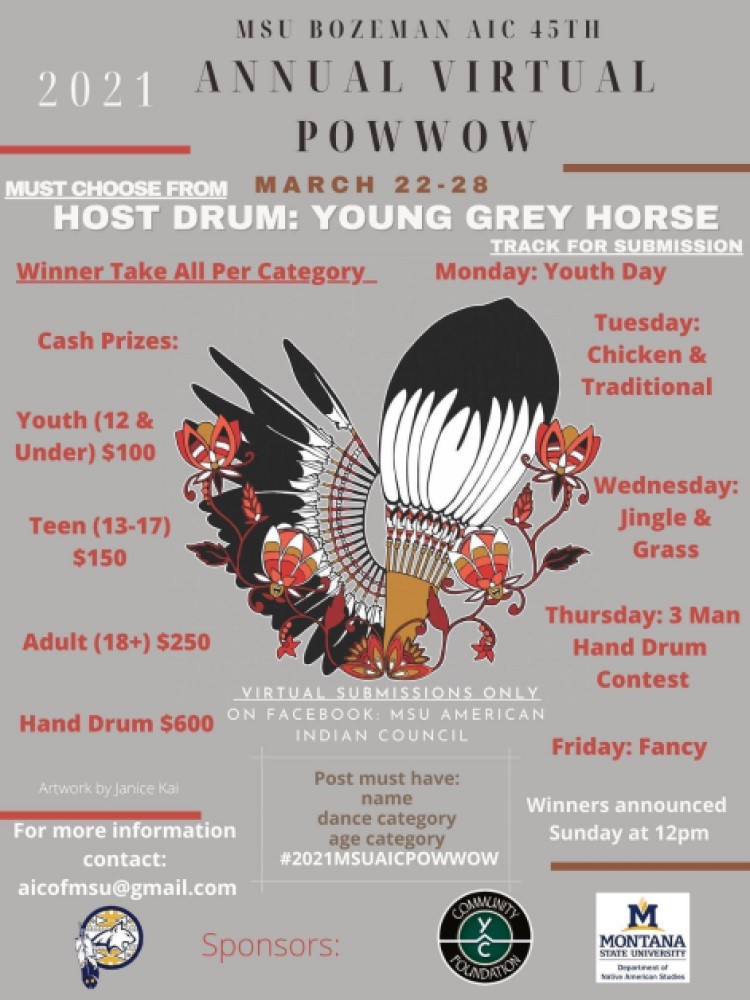News Based on facts, either observed and verified directly by the reporter, or reported and verified from knowledgeable sources.
First year of virtual powwows still going strong, some move back to arena
 Powwow participants gathered in March to celebrate the birthday of Jerrilane Lincoln at the Four Bears Events Center in New Town, N.D.
Powwow participants gathered in March to celebrate the birthday of Jerrilane Lincoln at the Four Bears Events Center in New Town, N.D.
By JoVonne Wagner
Buffalo’s Fire Correspondent
With Covid-19 vaccinations up and some public health barriers let down, the 2021 powwow season is seeing a return from the virtual platform to the dance floor. Social distancing powwows took center stage one year ago to compensate for the clampdown on public gatherings across the country during the coronavirus pandemic.
Many tribes canceled their powwows, stick games and other social celebrations to stem the spread of the highly contagious and sometimes-fatal virus. Since then, many tribal citizens have been vaccinated, especially individuals with pre-existing health problems. Natives have been disproportionately impacted by the pandemic.
Powwow planners remain cautious, continuing with virtual dances and events or requiring physical distancing. Montana State University held its March 22-28 powwow online. “It’s a good alternative for right now,” said Holly Old Crow, the 2020-21 co-president of the American Indian Student Council. Old Crow, a citizen of the Crow Tribe — famed for the Crow Fair, one of the biggest powwows in the country – described virtual, or social-distancing, powwows as a “completely different project,” something “really brand new to us.”
Old Crow told Buffalo’s Fire that powwow planners researched other social media powwows to learn the logistics of contesting, communicating with people, marketing and advertising. She explained how virtual preparation began in December with assigning contest categories to each of the event’s five days. “It’s different, but I think we’re really doing well with it.”

The co-president noted that MSU’s American Indian Council obtained unexpected sponsorship and donations for the virtual powwow. This provided awards for participants, as well as pay for maintenance and upkeep of facilities. What’s more, it meant planners could save the funding from last year’s canceled powwow to prepare for future in-person celebrations.
On Feb. 8, the CDC issued new guidelines, Interim Public Health Recommendations, which states that fully vaccinated people can “visit with other fully vaccinated people indoors without wearing masks or physical distancing.” A year into the pandemic, quarantine and distancing have taken an isolating toll on the powwow trail and powwow goers.
“I like to go to powwows, I play a lot of stick games, and I liked to travel all over. It was really sad last year not being able to do that,” said Blackfeet virtual participant Michael Fast Buffalo Horse. An avid Chicken Dancer and stick game player, Fast Buffalo Horse said, “Virtual [powwow] is fun but it’s not the same, definitely miss the powwows in person.”
He told Buffalo’s Fire he’s doubtful about the return of public gatherings. “So far this year everything’s up in the air,” he said. “I feel like it’s too soon.”
“I think we’re learning how to move forward in in-person powwows. We are all concerned for each other as relatives and wanting to make sure that each [in-person] powwow is done respectfully within the guidelines the health department and making sure we protect those who are vulnerable.”
-Sasha Hoskie, Navajo and Indian Health Service contact tracer
Entrepreneur Dan Simonds, a member of the Mashantucket Pequot Tribe, recently attended a powwow at New Town, N.D. “Just like everyone else, we all got the powwow itch and want to get back to normal.” Everyone is anxious to be reunited with friends and family, said the owner of Wampum Wear, a business based in Bozeman, Mont. “I’m vaccinated, so I felt it was safe for me to go. It was awesome to see folks again that we haven’t seen in a while.”
Even after people return to the powwow highway, Simonds predicts virtual powwows will stay around. He co-founded the Social Distance Powwow group on Facebook along with Stephanie Hebert and Whitney Rencountre. The Facebook site has attracted more than 238,000 followers. It’s become a gigantic stage for Natives everywhere to celebrate Indigenous tradition without risking community wellness.
The Social Distance Powwow has been featured in mainstream publications like Vogue, and Brut Media. The group is preparing for the future with new content uploads because many folks simply can’t make it to a powwow.
“Our page now has a purpose in the long run for bringing people to that space virtually,” Simonds said. “We also plan to have an in-person powwow down the road that’s Native-ran, by Natives for Natives.”

For more information on powwows coming up and to see if they are hosted virtually, visit Powwows.com, and for more information on the Social Distance Powwow visit the Facebook Page, or email socialdistancepowwow@gmail.com.
JoVonne Wagner is a Blackfeet tribal citizen majoring in Journalism at the University of Montana, Missoula. Contact her at jovonnewagner@gmail.com.
